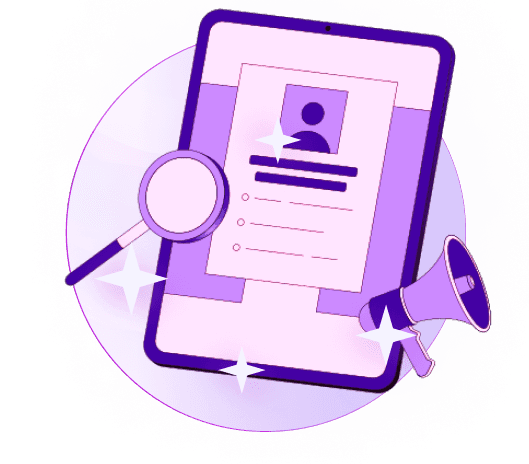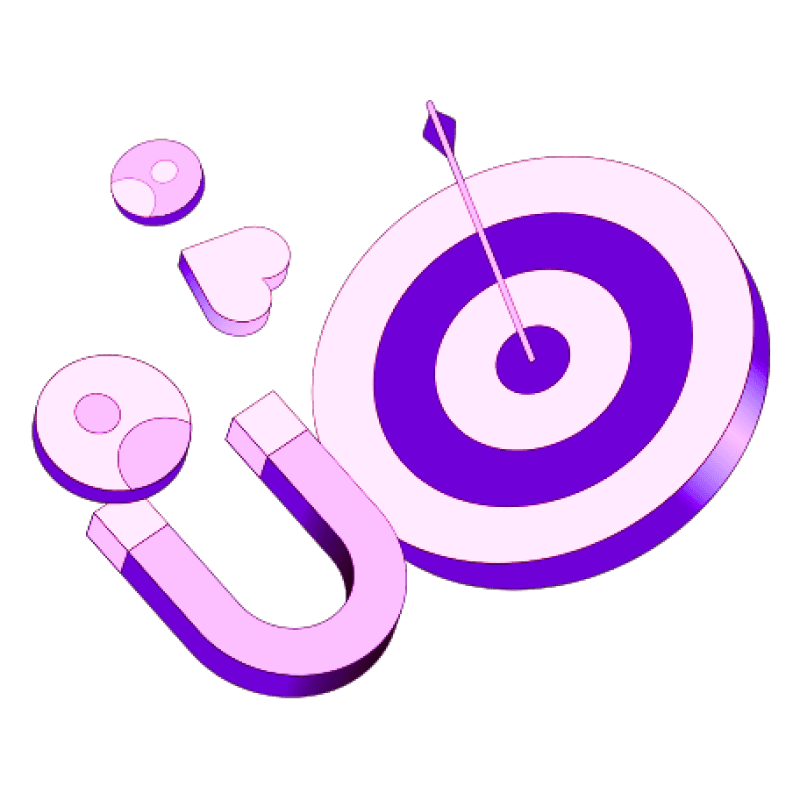Blogs
Articles

What is a Sales Lead? Master The Basics With Real Examples
A stunning 89% of small business and enterprise marketers say webinars perform better than other channels to create qualified leads. Understanding what makes a sales lead can revolutionize your business results.
This piece breaks down the sales leads meaning, explores different types with real examples, and reveals proven strategies to generate and qualify leads for your business. Our comprehensive guide helps both sales newcomers and veterans refine their approach.
What is a Sales Lead?
A sales lead builds the foundation of your sales pipeline. A sales lead can be a person or business that might become a client in the future. These leads start at the beginning of the customer's experience, and their value makes a huge difference to your business.
What do you mean by sales lead?
A sales lead includes both potential buyers and data that helps identify future customers. These leads haven't shown a clear intention to buy, unlike prospects. They know what your business offers but aren't ready to make an immediate purchase.
Sales leads come in two main types:
Business-to-business (B2B) leads - Companies that could buy your products or services. B2B leads need more time to close, multiple people to approve, and pay through their finance teams. These companies want solutions to specific business challenges and often reach out through your website, toll-free numbers, or join webinars to learn more.
Business-to-consumer (B2C) leads - People who show interest in what you offer. B2C leads can decide on their own, buy quickly, and pay using credit cards or cash.
What is considered a sales lead?
Someone becomes a sales lead after taking action that shows interest in your brand. This action doesn't mean they're ready to buy right away.
Here's what makes someone a lead:
Email newsletter subscribers
New LinkedIn connections or followers
Social media followers who participate in your content
Website visitors
The quality of your sales lead depends on factors like contact information accuracy, what made them respond, and if they knew about the sales chance when they did.
What Is a Sales Qualified Lead?
The lead qualification process sets successful sales teams apart from the rest. A good classification system helps you spot which prospects need your attention now and which ones need more nurturing.
Cold leads
Cold leads are prospects who haven't had any real contact with your business yet. These people usually don't know anything about your company or what you sell. They might need what you offer but haven't shown interest. Cold leads need a lot of nurturing since they're just starting their trip. Converting them takes work, but they play a vital role in lead generation.
Warm leads
Warm leads have shown some interest in what you do. They've connected with your company on social media, checked out your website, or joined your mailing list. While they haven't become customers yet, warm leads know their challenges and want to learn how your products could help. These prospects sit somewhere in the middle of their buying trip and respond better to helpful content rather than hard sells.
Hot leads
Hot leads are ready buyers in the final stages of making a purchase. They've shown real interest in your solutions and just need a gentle push to seal the deal. These "red-hot" prospects are eager to convert. They understand their needs and see how your business can solve their problems. Hot leads actively look for solutions and are qualified prospects who often need just one good conversation to become customers.
Marketing qualified leads (MQL)
Marketing qualified leads (MQLs) are prospects your marketing team thinks will likely become customers. They've engaged with your content or visited your website several times. MQLs usually download basic content that teaches them about your products. They gather information and weigh their options but aren't quite ready to buy.
Sales qualified leads (SQL)
Sales qualified leads (SQLs) are prospects that both marketing and sales teams have vetted who show clear buying intent. These valuable leads have engaged deeply with your company through advanced content like case studies, product comparisons, and pricing charts. SQLs meet specific BANT criteria (Budget, Authority, Needs, and Timeline), which suggests they're ready for sales conversations. The key difference between MQLs and SQLs comes down to purchase intent - SQLs want to talk business and are prepared to buy your product or service.
What is the role of a sales lead?
Sales leads are the lifeblood of any successful business. Your sales process would stagnate and your company's growth would halt without them. Understanding their role is vital to keep your business sustainable.
Sales leads work as gateways to new revenue opportunities. They help businesses find potential customers instead of searching aimlessly for buyers. These leads also help sales professionals reach customers globally through the internet, which 91.8% of Americans regularly access.
A sales professional starts the process by generating, qualifying and adding lead data to the company's sales pipeline. Sales teams can then use this contact information to:
Send targeted sales-pitch emails
Distribute direct marketing materials
Make outbound sales calls
Build relationships with potential customers
Your business stays profitable when sales leads keep your sales funnel moving steadily. Your team can focus on people who have already showed interest in your brand instead of reaching out to consumers with no prior connection.
Sales lead positions come with these key responsibilities:
Managing and developing sales teams to accelerate growth
Creating new business opportunities through market research
Negotiating with customers to close sales
Monitoring competitor activity
Preparing sales reports and forecasts
A qualified sales lead brings great value because they already want your products or services. Your sales team can utilize this interest to nurture relationships until leads become paying customers.
Getting these leads needs skill and effort. It requires you to understand consumer needs and provide solutions that address them.
Types of Sales Leads
The right sales lead categorization helps you approach each potential customer with the right strategy at the right time. Sales leads fit into several different categories based on industry best practices. Each category needs different ways to connect with prospects.
Sales leads can be divided based on business relationships:
B2B (Business-to-Business) Leads - These potential customers are other businesses looking for solutions to specific challenges. They need longer sales cycles, multiple approval levels, and payments through finance departments.
B2C (Business-to-Consumer) Leads - Individual customers who make their own buying decisions. They usually complete transactions in one or a few interactions and pay with credit cards or cash.
A common classification system groups leads by their readiness to buy:
Cold Leads - Prospects who have no previous contact with your company. They might match your customer profile but haven't shown interest in your products or services.
Warm Leads - These prospects show some interest in your business. They follow your social media, sign up for newsletters, or browse your website.
Hot Leads - Leads ready to buy who know their needs and see how your business can solve their problems.
Sales teams often use qualification-based categories:
Information-Qualified Leads (IQLs) - Prospects who need answers to questions or solutions to problems. You can reach them through informational content.
Marketing-Qualified Leads (MQLs) - Leads who know your brand and interact with marketing content but aren't ready to buy.
Product-Qualified Leads (PQLs) - Prospects who have received value from your product through a trial or freemium version.
Sales-Qualified Leads (SQLs) - Leads who want to purchase and meet your company's criteria for sales interaction.
Knowing these differences helps you focus your efforts and customize your approach based on each lead's position in their buying experience.
What is an example of a sales lead?
Sales leads come in different forms. Let's get into ground scenarios that show how various leads turn into customers.
Example 1: A ready-to-buy customer
Picture yourself at a networking event. You chat with someone who mentions their company's software problems. This person becomes a hot lead if you sell innovative software solutions - they need exactly what you offer. Ready-to-buy customers display clear buying signals. They check your pricing page repeatedly, book demos, or ask about your product directly. These prospects know their problem and see how your business solves it. They stand just one conversation away from becoming customers.
Example 2: A long-term nurtured lead
Not every lead converts right away. A marketing manager downloads your ebook about industry trends. They love your content but aren't ready to buy yet. This scenario presents a classic chance for nurturing. Your strategic email sequences deliver educational content, webinar invites, and case studies that build trust gradually. Companies using welcome series see 33% more long-term engagement than single welcome emails. The initially lukewarm lead becomes a qualified prospect ready for sales talks as their knowledge grows and needs change over months.
Example 3: A lead from a referral program
Referrals create the most valuable leads. Happy customers recommend you to their colleagues. One report shows referrals are a top lead generation tactic for 65% of B2B respondents. They perform better than email marketing, SEO, and social media. Refreach data reveals an impressive 11% average conversion rate for referrals. Refind (a content recommendation engine) rewards referrals smartly. Users get lifetime access to their premium version after referring 20 people. This approach builds their customer base while rewarding brand promoters.
How to Generate and Qualify Sales Leads?
Quality leads are the life-blood of business growth. Smart strategies help you attract prospects who actually need what you offer. Let's take a closer look at proven methods that will fill your pipeline with qualified prospects.
Using content and SEO
Content marketing ranks among the most powerful lead generation strategies. Research shows it costs 62% less than traditional marketing. Your first step should focus on keyword research to understand what prospects search for. This research reveals your target audience's learning needs and buying intentions.
Your content should address specific pain points. Blog posts let you share industry insights while giving useful information that answers your prospects' questions. Note that 53.3% of website traffic comes from organic search, which makes SEO crucial to generate leads.
Social media and paid ads
Social media platforms give you powerful tools to generate sales-qualified leads. Studies reveal 66% of marketers utilize social media to generate leads. Success comes from positioning yourself as an intellectual influence in your industry.
PPC (pay-per-click) advertising lets you control your budget and targeting completely. You only spend money when someone clicks your ad. Facebook lead ads work especially well—Facebook users click 12 ads monthly on average.
Webinars and events
Webinars deliver better results than other lead generation channels. They naturally filter serious prospects—someone who commits 30 minutes to a webinar shows more interest than a quick blog reader.
Virtual conferences draw highly relevant audiences while showcasing your expertise. These events generate leads naturally since attendees must provide their information to register.
To maximize reach and engagement, partnering with reliable video on demand platform providers ensures seamless streaming, easy access for attendees, and effective management of registration and content.
Lead scoring and qualification process
Lead scoring helps prioritize prospects based on their actions and characteristics. Qualified leads emerge as points accumulate. This system identifies urgent prospects through frameworks like:
B.A.N.T. (Budget, Authority, Need, Timeline)
C.H.A.M.P. (Challenges, Authority, Money, Prioritization)
Complex sales cycles benefit from predictive lead scoring that utilizes AI and machine learning to identify patterns and analyze data quickly.
Persana.ai offers AI-powered lead scoring to identify your most promising prospects instantly, streamlining your entire lead generation process.
Conclusion
Your sales approach changes completely when you understand what makes a real sales lead. This piece breaks down the basic concept of sales leads - people or organizations that could become paying customers based on how they interact with your brand.
Sales leads are vital to keep any business running strong. Your sales pipeline would run dry without them and your company's growth would stop. You need to know the difference between cold, warm, and hot leads to create the right strategies to reach out to them.
The way leads move through qualification stages shapes your approach. Starting from information-qualified leads to marketing-qualified leads, and finally to sales-qualified leads ready for sales talks. This helps you focus your efforts and tailor your approach based on where each lead stands in their buying experience.
Real-life examples show how different leads turn into customers in various ways. Some prospects are ready to buy right away while others need months of care before making a purchase. Your pipeline stays full of qualified prospects through proven strategies like content marketing, social media outreach, and webinars - whatever timeline they follow.
FAQ
Business owners and sales professionals often ask these common questions about sales leads.
How long does it take to turn a lead into a customer?
The time to convert leads differs based on industries and sales cycles. B2B businesses typically need 30-60 days to convert a lead into a customer. B2C conversions happen much quicker—usually within a few days to two weeks. Data shows that all but one of these B2B sales take one to three months to close. Several factors affect how quickly you can convert leads:
The lead's quality and original interest level
Your product or service complexity
How well your follow-up process works
Access to decision-makers
Quick conversions often show that your funnels work well and your lead nurturing strategies deliver results.
How does the sales lead generation process work?
Lead generation follows a clear path from awareness to conversion:
Creating awareness and interest - Create educational blog posts and help users participate through social media
Capturing lead information - Get contact details through newsletter sign-ups, webinars, or gated content
Lead qualification - Give points based on specific actions like webinar attendance or website visits
Tailored engagement - Use contact information to create personalized communications
Your lead generation success depends on constant testing and refinement of content, calls-to-action, and landing pages to boost conversion rates.
How can a CRM maximize your sales lead generation efforts?
A Customer Relationship Management (CRM) system can transform your lead generation results by offering:
Centralized data management - Keep all lead information in one easy-to-access place
Automated follow-ups - Send timely communications automatically
Lead scoring and qualification - Focus on prospects based on their behavior and engagement
Pipeline visibility - See where each lead is in your sales process

Create Your Free Persana Account Today
Join 5000+ GTM leaders who are using Persana for their outbound needs.
How Persana increases your sales results
One of the most effective ways to ensure sales cycle consistency is by using AI-driven automation. A solution like Persana, and its AI SDR - Nia, helps you streamline significant parts of your sales process, including prospecting, outreach personalization, and follow-up.



